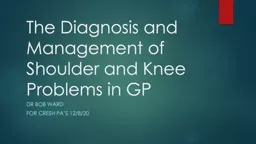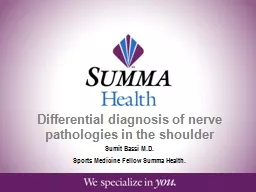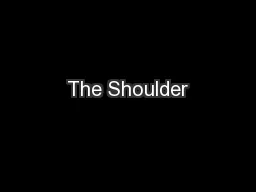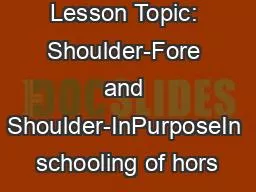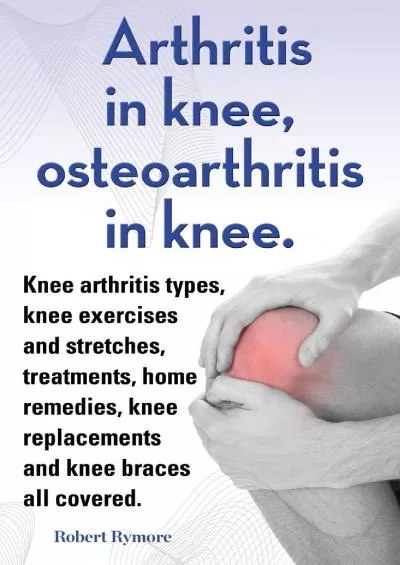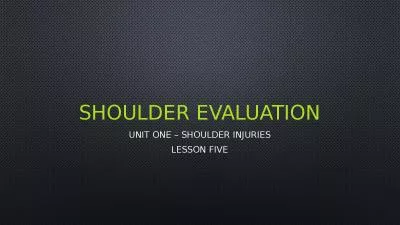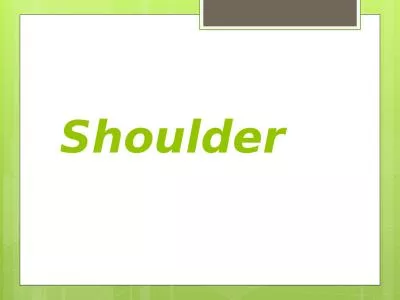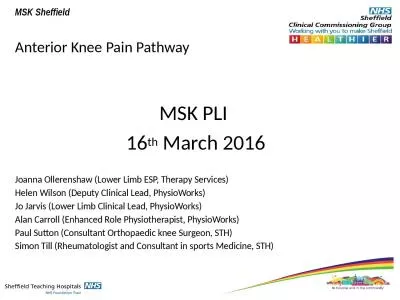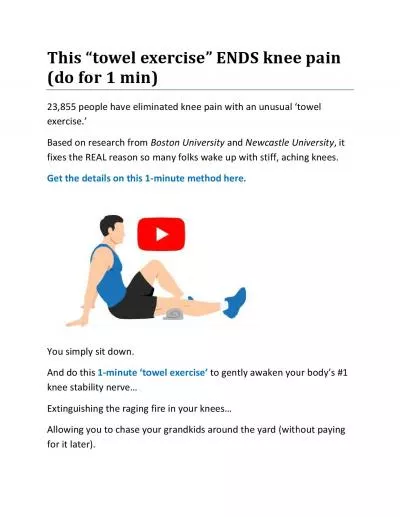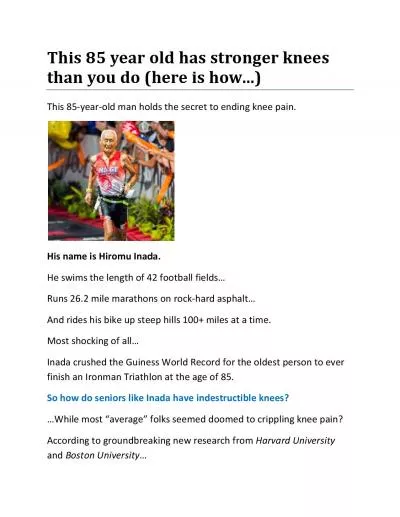PPT-The Diagnosis and Management of Shoulder and Knee Problems in GP
Author : okelly | Published Date : 2022-06-01
Dr Bob ward For CRESH Pas 12820 Introduction Who Am I Ex GP Ex GPSI Ex Trainer Ex PD Ex PAD Current Appraiser Senior Appraiser Independent Educator COVID19 111
Presentation Embed Code
Download Presentation
Download Presentation The PPT/PDF document "The Diagnosis and Management of Shoulder..." is the property of its rightful owner. Permission is granted to download and print the materials on this website for personal, non-commercial use only, and to display it on your personal computer provided you do not modify the materials and that you retain all copyright notices contained in the materials. By downloading content from our website, you accept the terms of this agreement.
The Diagnosis and Management of Shoulder and Knee Problems in GP: Transcript
Download Rules Of Document
"The Diagnosis and Management of Shoulder and Knee Problems in GP"The content belongs to its owner. You may download and print it for personal use, without modification, and keep all copyright notices. By downloading, you agree to these terms.
Related Documents

